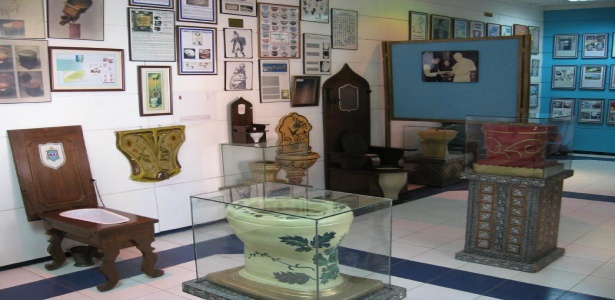
One is limited only by his imagination in Saddi Dilli and a clear example of the same is the International Museum of Toilets in New Delhi, India. This quirky museum houses toilet-related paraphernalia dating from 2500 BC to modern times.
This International Museum of Toilets is a brain child of Sulabh International, an NGO (non government organization) who has done commendable work in Saddi Dilli towards sanitization and health awareness along with developing pour-flush toilets and bio-gas plants. Educating the children of manual scavengers about the relative health hazards and the importance of maintaining cleanliness is also always on high priority for Sulabh International.
The idea behind creating such a museum is that museums are considered to be the warehouse for evidences of cultural and scientific interests and the national heritage of a particular country rests with museums. The international museum of toilets surely scores full points for being able to preserve interesting facts about the minute details of the toilet evolution over many decades from across the world.
This museum was built in order to teach people about the development of toilets, the designs and the materials that are used and to help the sanitation sector. The museum presents a collection of panels, photographs, models and replicas of toilets that were and are used in various countries. One can also get his hands on the several books available on the evolution of toilets globally.
Although the museum has a widespread display of privies, chamber pots, toilet furniture, bidets and water closets that have been in use since 1145 A D till the present times, the highlight of the museum is the replica of throne of Louis the XIII. It is believed that King Louis XIII and Louis the XIV used to have court sessions while using the toilet.
Among other priced possessions that the museum boasts of are ancient stoneware chamber pots from Britain; ornate painted medieval urinals; and even `disguised’ commodes – French one which looks like a stack of books, and an English one which resembles a treasure chest! More practical toilets include a microwave toilet, and an electric toilet that was designed in 1929, for use on chilly winter nights.
In addition, there is a first Water Closet that was invented by John Harrington, a court poet of Queen Elizabeth I, in 1596 A.D. which was meant for the usage of only the queen and the inventor. Then there is information on a toilet that was developed in Chicago, USA, which had a buttock stimulating mechanism to overcome the problem of constipation. This apart, the museum also has a rare collection of beautiful poems about toilets.






